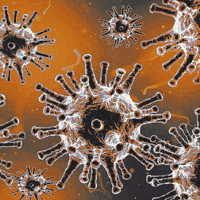Gender differences in COVID-19 patients: a regional survey among physicians of Internal Medicine Wards

All claims expressed in this article are solely those of the authors and do not necessarily represent those of their affiliated organizations, or those of the publisher, the editors and the reviewers. Any product that may be evaluated in this article or claim that may be made by its manufacturer is not guaranteed or endorsed by the publisher.
Authors
Severe acute respiratory syndrome-related coronavirus 2 (SARS-CoV-2) has infected millions of individuals around the World. Hypertension (HT), chronic heart disease (CHD), and diabetes mellitus (DM), particularly in the elderly, increase susceptibility to SARS-CoV-2 infection. However, conflicting results [such as coronavirus 2019 (COVID-19) disease vulnerability, case fatality, etc.] have been reported about the response to infection and COVID-19 outcomes in men and women. Therefore, understanding predictors of Intensive Care Unit (ICU) admission might help future planning and management of the disease. We conducted a multicenter survey about COVID-19 involving internists from Internal Medicine Wards. This survey indirectly allowed us to analyze the information of 2400 patients hospitalized in 35 wards of Internal Medicine of the Campania Region between July and October 2020. Our investigation has detected that the infection is more frequent in males, and the number of male patients hospitalized in ICU is also higher than females, with a large proportion of hypertensive patients. Extensive prospective studies are required to confirm this finding and explore the mechanisms for which hypertensive males are exposed to a higher proportion of admission to ICU and higher case fatality rates.
How to Cite

This work is licensed under a Creative Commons Attribution-NonCommercial 4.0 International License.
PAGEPress has chosen to apply the Creative Commons Attribution NonCommercial 4.0 International License (CC BY-NC 4.0) to all manuscripts to be published.






